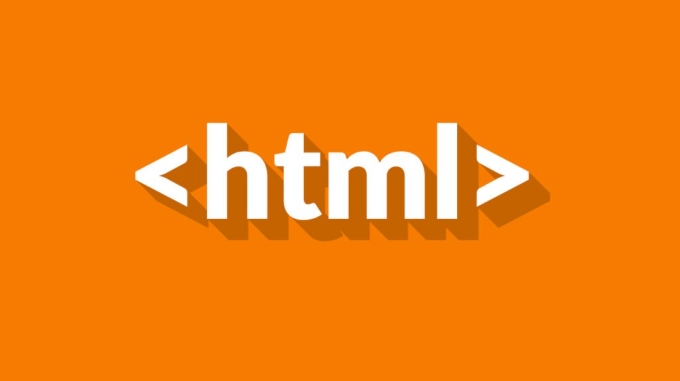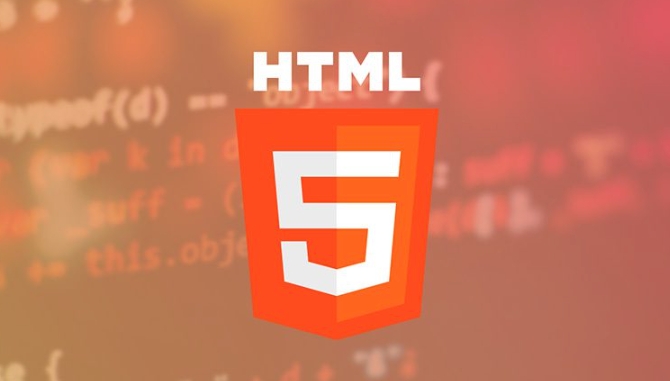 Web Front-end
Web Front-end
 HTML Tutorial
HTML Tutorial
 What is the role in html attributes and how does it relate to ARIA for accessibility?
What is the role in html attributes and how does it relate to ARIA for accessibility?
What is the role in html attributes and how does it relate to ARIA for accessibility?
Jul 01, 2025 am 01:30 AMThe role attribute defines what an element is or does when using native HTML elements isn’t possible. 1. It tells assistive technologies like screen readers how to interpret custom components built with non-semantic elements such as

HTML attributes like role play a key role in making web content more accessible, especially for users who rely on assistive technologies such as screen readers. While HTML has built-in semantics—like using <button></button> for buttons or <nav></nav> for navigation areas—sometimes developers need to go beyond standard elements to convey the correct meaning. That’s where ARIA (Accessible Rich Internet Applications) comes in, and the role attribute is one of its core tools.

What does the role attribute do?
The role attribute helps define what an element is or does, especially when it's not possible or practical to use a native HTML element. For example, if you're building a custom dropdown menu using <div>s and <code><span></span>s, a screen reader might not know how to interpret those elements without extra help.
By adding something like role="menu" or role="menuitem", you’re telling assistive technologies that this block behaves like a menu with selectable items. This doesn’t change how the element looks visually but gives screen readers the context they need to present the information correctly.
Some common roles include:

-
navigation– for site navigation links -
button– when creating a clickable element that isn't a<button></button> -
alert– to announce important messages -
dialog– for modal windows
How role works with ARIA attributes
ARIA includes not just roles, but also states and properties like aria-expanded, aria-label, and aria-selected. These work together to provide richer accessibility information.
For instance, imagine a collapsible accordion component. You might use:
<div role="button" aria-expanded="false" aria-controls="panel1"> Click to expand </div> <div id="panel1" role="region" aria-hidden="true"> Hidden content here. </div>
In this case:
-
role="button"tells screen readers this is interactive -
aria-expandedindicates whether the section is open or closed -
aria-controlslinks the button to the content it controls -
aria-hiddentells the screen reader whether to read the content
All these pieces work together to create an accessible experience that mimics native behavior.
When should you use role?
You don’t always need to use role. In fact, if there's a native HTML element that already represents the function, you should use that instead. Native elements come with built-in keyboard support and accessibility semantics.
Use role when:
- You're building a custom component that doesn’t have a native equivalent (like tabs, sliders, or complex widgets)
- You're repurposing a basic element like a
<div> or <code><span></span>to act like something else - You're enhancing existing markup to better communicate intent to screen readers
- ? Using
role="button"on a non-interactive element like a plain<div> without adding keyboard support (like <code>tabindex="0"and handling Enter/Space key events) - ? Overriding native semantics unnecessarily, like putting
role="paragraph"on a<p></p>tag - ? Forgetting to update roles and ARIA attributes dynamically as the UI changes (e.g., forgetting to toggle
aria-expandedwhen a menu opens)
One thing to note: some roles are meant to be used only in specific contexts. For example, role="grid" should only be used with elements containing rows and cells (role="row" and role="gridcell"), otherwise it can confuse screen reader users.
A few common mistakes to avoid
Sometimes using role incorrectly can make things less accessible. Here are a few pitfalls to watch out for:
Also, not all roles are supported across all browsers and screen readers, so it’s worth checking ARIA specs or using tools like axe or Lighthouse to test your implementation.
It’s not magic, but when used properly, the role attribute and ARIA can make a big difference in how accessible your site feels to users who rely on screen readers. Just remember: start with semantic HTML, then enhance with ARIA where needed.
The above is the detailed content of What is the role in html attributes and how does it relate to ARIA for accessibility?. For more information, please follow other related articles on the PHP Chinese website!

Hot AI Tools

Undress AI Tool
Undress images for free

Undresser.AI Undress
AI-powered app for creating realistic nude photos

AI Clothes Remover
Online AI tool for removing clothes from photos.

Clothoff.io
AI clothes remover

Video Face Swap
Swap faces in any video effortlessly with our completely free AI face swap tool!

Hot Article

Hot Tools

Notepad++7.3.1
Easy-to-use and free code editor

SublimeText3 Chinese version
Chinese version, very easy to use

Zend Studio 13.0.1
Powerful PHP integrated development environment

Dreamweaver CS6
Visual web development tools

SublimeText3 Mac version
God-level code editing software (SublimeText3)

Hot Topics
 How do I stay up-to-date with the latest HTML standards and best practices?
Jun 20, 2025 am 08:33 AM
How do I stay up-to-date with the latest HTML standards and best practices?
Jun 20, 2025 am 08:33 AM
The key to keep up with HTML standards and best practices is to do it intentionally rather than follow it blindly. First, follow the summary or update logs of official sources such as WHATWG and W3C, understand new tags (such as) and attributes, and use them as references to solve difficult problems; second, subscribe to trusted web development newsletters and blogs, spend 10-15 minutes a week to browse updates, focus on actual use cases rather than just collecting articles; second, use developer tools and linters such as HTMLHint to optimize the code structure through instant feedback; finally, interact with the developer community, share experiences and learn other people's practical skills, so as to continuously improve HTML skills.
 How do I use the element to represent the main content of a document?
Jun 19, 2025 pm 11:09 PM
How do I use the element to represent the main content of a document?
Jun 19, 2025 pm 11:09 PM
The reason for using tags is to improve the semantic structure and accessibility of web pages, make it easier for screen readers and search engines to understand page content, and allow users to quickly jump to core content. Here are the key points: 1. Each page should contain only one element; 2. It should not include content that is repeated across pages (such as sidebars or footers); 3. It can be used in conjunction with ARIA properties to enhance accessibility. Usually located after and before, it is used to wrap unique page content, such as articles, forms or product details, and should be avoided in, or in; to improve accessibility, aria-labeledby or aria-label can be used to clearly identify parts.
 How do I create a basic HTML document?
Jun 19, 2025 pm 11:01 PM
How do I create a basic HTML document?
Jun 19, 2025 pm 11:01 PM
To create a basic HTML document, you first need to understand its basic structure and write code in a standard format. 1. Use the declaration document type at the beginning; 2. Use the tag to wrap the entire content; 3. Include and two main parts in it, which are used to store metadata such as titles, style sheet links, etc., and include user-visible content such as titles, paragraphs, pictures and links; 4. Save the file in .html format and open the viewing effect in the browser; 5. Then you can gradually add more elements to enrich the page content. Follow these steps to quickly build a basic web page.
 How do I create checkboxes in HTML using the element?
Jun 19, 2025 pm 11:41 PM
How do I create checkboxes in HTML using the element?
Jun 19, 2025 pm 11:41 PM
To create an HTML checkbox, use the type attribute to set the element of the checkbox. 1. The basic structure includes id, name and label tags to ensure that clicking text can switch options; 2. Multiple related check boxes should use the same name but different values, and wrap them with fieldset to improve accessibility; 3. Hide native controls when customizing styles and use CSS to design alternative elements while maintaining the complete functions; 4. Ensure availability, pair labels, support keyboard navigation, and avoid relying on only visual prompts. The above steps can help developers correctly implement checkbox components that have both functional and aesthetics.
 How do I minimize the size of HTML files?
Jun 24, 2025 am 12:53 AM
How do I minimize the size of HTML files?
Jun 24, 2025 am 12:53 AM
To reduce the size of HTML files, you need to clean up redundant code, compress content, and optimize structure. 1. Delete unused tags, comments and extra blanks to reduce volume; 2. Move inline CSS and JavaScript to external files and merge multiple scripts or style blocks; 3. Simplify label syntax without affecting parsing, such as omitting optional closed tags or using short attributes; 4. After cleaning, enable server-side compression technologies such as Gzip or Brotli to further reduce the transmission volume. These steps can significantly improve page loading performance without sacrificing functionality.
 How has HTML evolved over time, and what are the key milestones in its history?
Jun 24, 2025 am 12:54 AM
How has HTML evolved over time, and what are the key milestones in its history?
Jun 24, 2025 am 12:54 AM
HTMLhasevolvedsignificantlysinceitscreationtomeetthegrowingdemandsofwebdevelopersandusers.Initiallyasimplemarkuplanguageforsharingdocuments,ithasundergonemajorupdates,includingHTML2.0,whichintroducedforms;HTML3.x,whichaddedvisualenhancementsandlayout
 How do I use the element to represent the footer of a document or section?
Jun 25, 2025 am 12:57 AM
How do I use the element to represent the footer of a document or section?
Jun 25, 2025 am 12:57 AM
It is a semantic tag used in HTML5 to define the bottom of the page or content block, usually including copyright information, contact information or navigation links; it can be placed at the bottom of the page or nested in, etc. tags as the end of the block; when using it, you should pay attention to avoid repeated abuse and irrelevant content.
 How do I use the tabindex attribute to control the tab order of elements?
Jun 24, 2025 am 12:56 AM
How do I use the tabindex attribute to control the tab order of elements?
Jun 24, 2025 am 12:56 AM
ThetabindexattributecontrolshowelementsreceivefocusviatheTabkey,withthreemainvalues:tabindex="0"addsanelementtothenaturaltaborder,tabindex="-1"allowsprogrammaticfocusonly,andtabindex="n"(positivenumber)setsacustomtabbing





